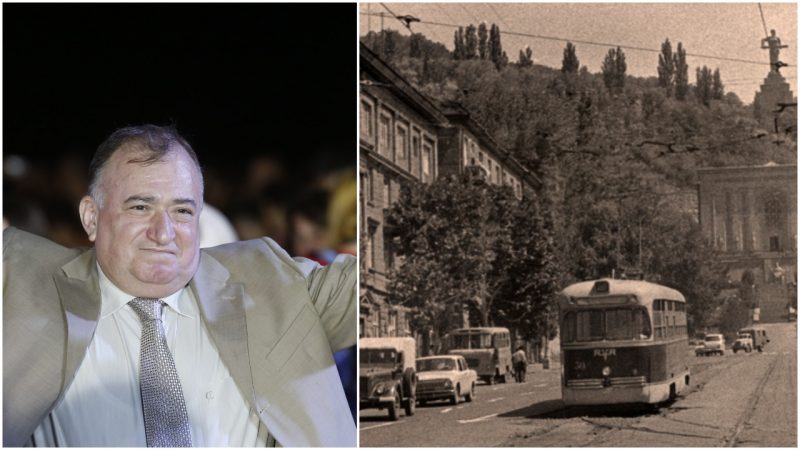
A champion is someone who certainly exceeds expectations–a person of tremendous motivation striving for victory. The term applies not only to sports but also to fields such as science, human rights, and politics. There are many champions in the history of civilization.
Then there’s Shavarsh Karapetyan.
Even though this lavish introduction sounds a tad exaggerated, bear with me, for when you learn about this man’s achievements, you will certainly agree that he deserves it.

Retired finswimmer Shavarsh Karapetyan attends the opening ceremony of the 2nd International Motivational Film Festival ‘Bridge of Arts.’ Valery Matytsin/TASS (Photo by Valery Matytsin\TASS via Getty Images)
After all, Karapetyan, an Armenian-born Soviet finswimmer, won the world championship 17 times.
He is also a 13-time European champion, and a seven-time champion of his homeland, the USSR. Apart from this, Karapetyan broke the World Record 11 times.
One might say that he is the embodiment of finswimming itself.

Yerevan, Armenia.
However, what makes Karapetyan more than a champion fin swimmer are not the medals on his wall, but his relentless sacrifice for others.
In 1976, he personally saved 20 people from drowning after a trolley bus flew off the road and into a frozen lake near Yerevan, the capital of Armenia.
But in order to understand his act of courage, we first need to take a peek into his life and career.
Perhaps the crucial experience that led Karapetyan to turn to professional swimming was his narrow escape from death as a 15-year-old. He was beaten up by a group of hoodlums who tied him to a rock and threw him into a nearby lake.
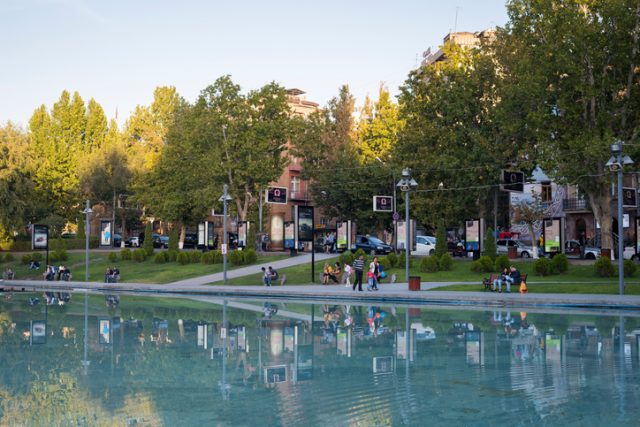
Swan Lake in Yerevan, Armenia.
By strength alone, he managed to tear the ropes off his hands, liberate himself from the stone that was dragging him to the bottom, and swim out victorious. After this incident, he took up swimming, but due to petty rivalry was denied the right to compete on his national team.
So he switched to finswimming and quickly rose to prominence, winning a number of state-level competitions. By the age of 18, he was already the champion of the Soviet Union and just two months later, he became the European champion by breaking the World Record.
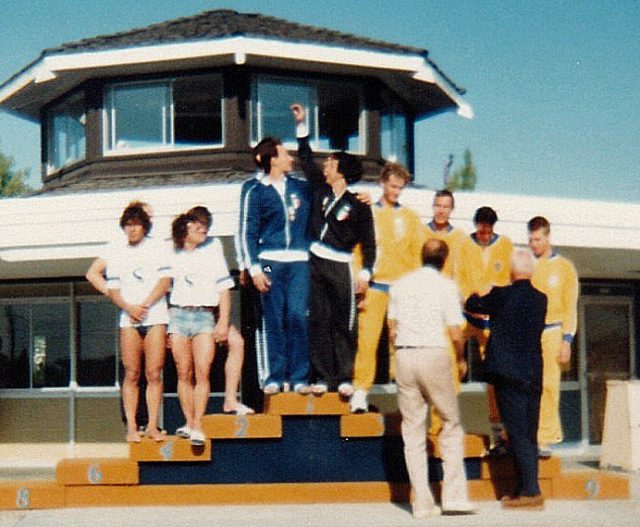
Finswimming relay medals podium at World Games I in 1981. Photo by Jeff In Ca CC BY-SA 4.0
Envy followed him wherever he went, and there was even an attempt on his life by a fellow competitor who sabotaged his oxygen tank during a championship in Kiev. Even with this handicap, which nearly cost him his life, Karapetyan won the race.
He had another brush with death in 1974, when a bus he was riding on almost fell off a cliff. In the midst of panic, the swimmer took the steering wheel and carefully rode the bus into reverse, until reaching safety. Thirty lives, including his own, were saved on that day, thanks to his initiative.
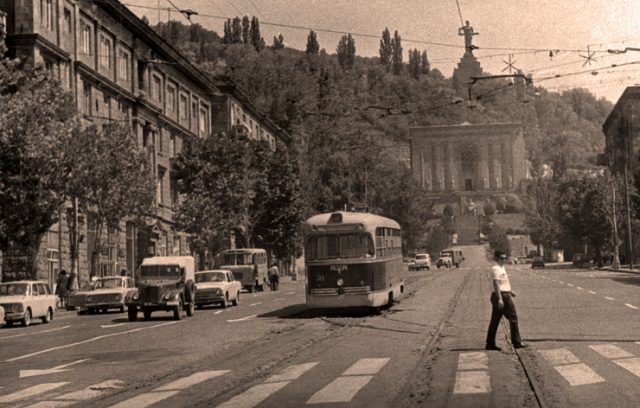
Old photo of Yerevan, Armenia, c. 1963.
But what followed defined the rest of his life. Two years after this incident, Karapetyan was conducting his usual morning exercise of running beside Yerevan Lake when a trolleybus hurtled past him and fell right into the frozen reservoir.
Due to the sheer power of the impact, most of the 92 passengers aboard lost consciousness, while their transport-turned-death trap was sinking to the bottom of the freezing lake. Without hesitation, the professional diver knew what to do.
He jumped into the water, broke the glass window of the trolleybus with his bare feet, and started pulling the people out.

Shavarsh Karapetyan 2014. Photo by Канал Люди CC BY 3.0
The bus settled on the lake bed, 33 feet underwater and 80 feet from the shore, and Karapetyan had to make 30 consecutive dives in order to pull out as many people as he could. In the end, 20 of the passengers were saved. He managed to pull out more, but for some, it was already too late.
Even though the incident was a complete disaster, if it weren’t for his heroism, it would have been much worse. As for Karapetyan, the price was high. After his 30th dive, he lost consciousness himself, as a result of a lack of oxygen.

Finswimmer. Photo by Cimba69 CC BY SA 4.0
Later, the consequences of such a superhuman effort took hold─the swimmer was diagnosed with pneumonia and blood contamination from the polluted industrial water.
After a 46-day coma, the hero of Yerevan Lake finally woke up. Still, his career was over due to the extreme nervous exhaustion which took hold.
Even though one would expect that instant recognition was the least he deserved, the story of his heroism remained largely unknown until 1982, when an article was published in the state-wide newspaper Komsomolskaya Pravda, to commemorate his extraordinary feat.
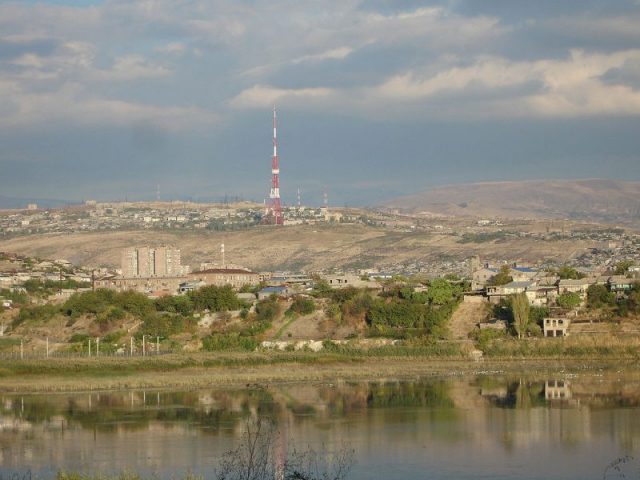
Yerevan Lake. Photo by I, Bouarf CC BY-SA 3.0
Until then, the fact that it was the champion himself who saved all those people was known only to the locals of Yerevan.
After the article titled The Underwater Battle of the Champion, Karapetyan received 75,000 letters of praise and thanks and became a household name in the USSR.

Retired Soviet-Armenian finswimmer Shavarsh Karapetyan. (Photo by Artyom Geodakyan\TASS via Getty Images)
Modest by nature, he never saw it as heroism. Rather, he was frustrated by the fact that so many others died in the crash that day. When asked in an interview about the event, he replied:
“I knew that I could only save so many lives, I was afraid to make a mistake. It was so dark down there that I could barely see anything. On one of my dives, I accidentally grabbed a seat instead of a passenger… I could have saved a life instead. That seat still haunts me in my nightmares.”
Since then Shavarsh Karapetyan had been celebrated and awarded a number of times, including two medals bestowed upon him by his own government, a UNESCO “Fair Play” award, and the honor of having an asteroid named after him: 3027 Shavarsh.
In 2014 he carried the torch for the Winter Olympics in Moscow, where he currently resides as the owner of a shoe shop called The Second Breath.
Karapetyan leads a quiet life below the radar, but the memory of his heroism remains as vivid as ever, for people never forget a champion.

